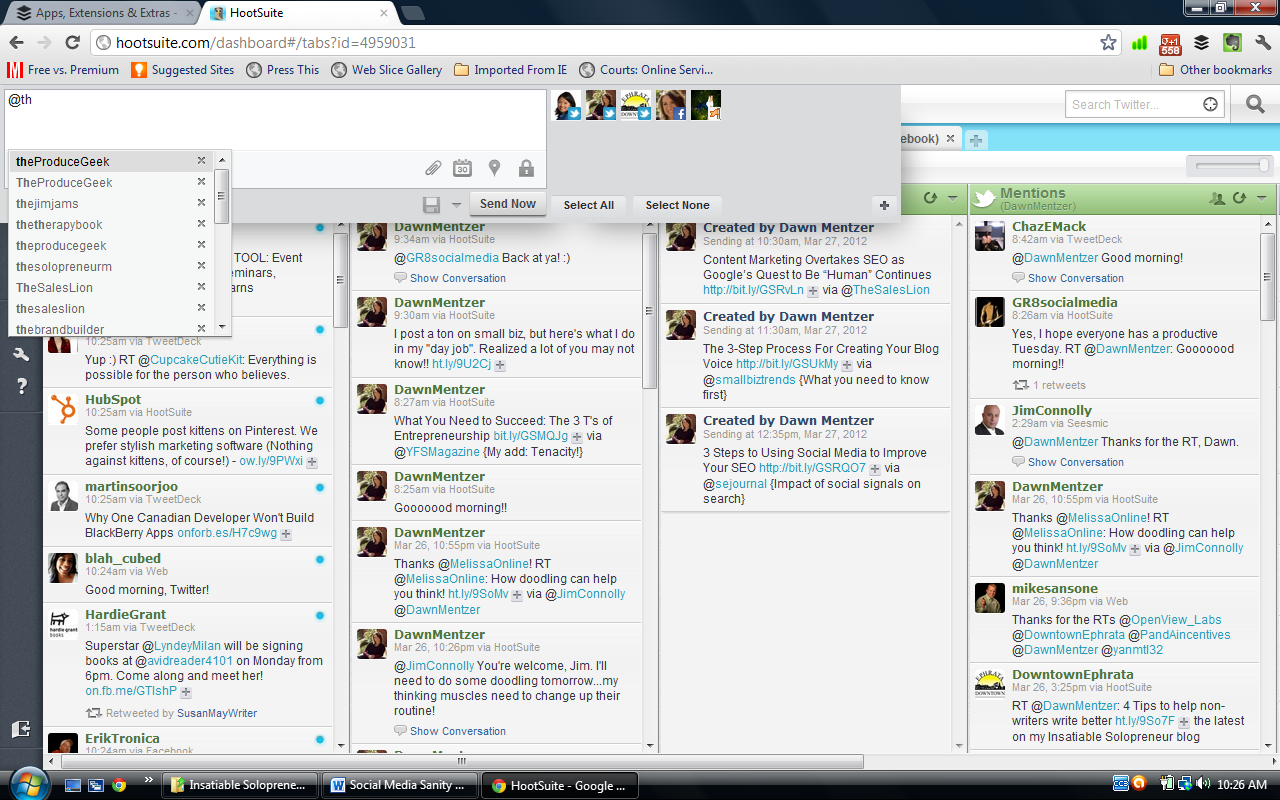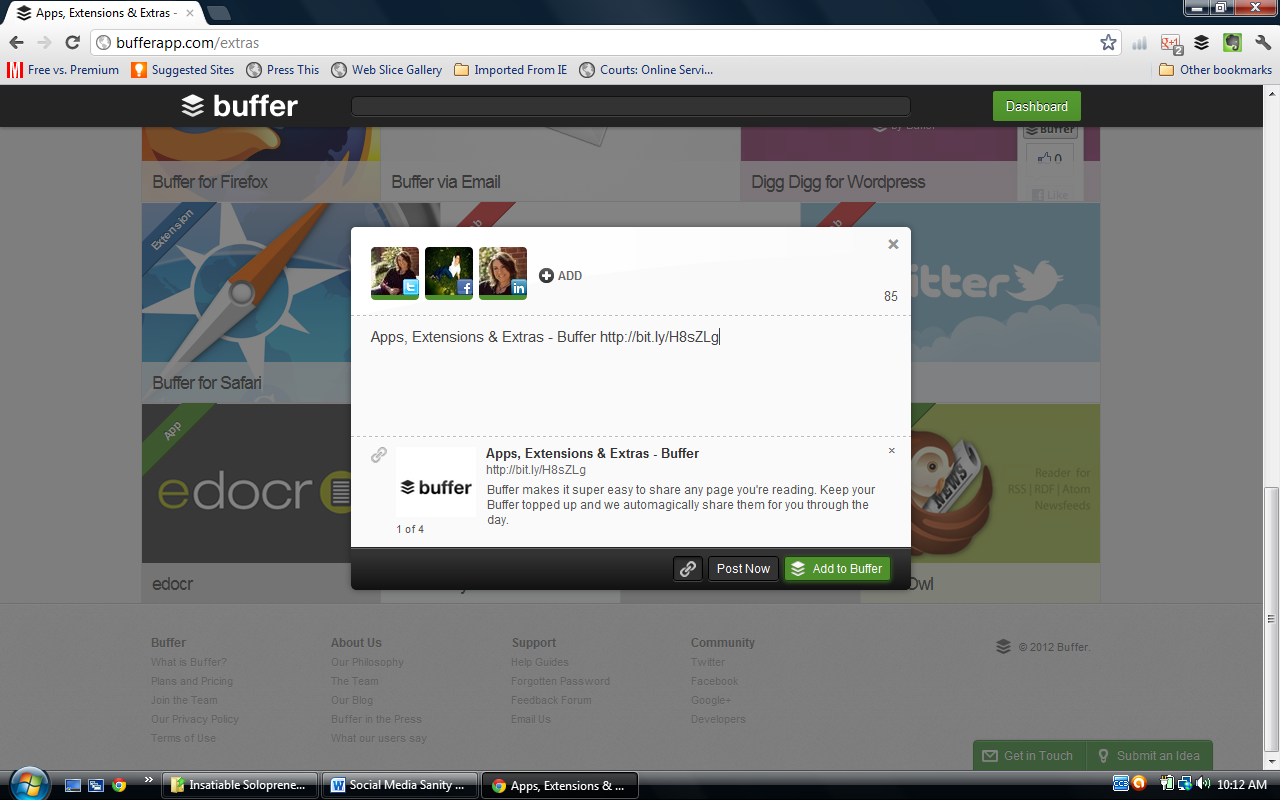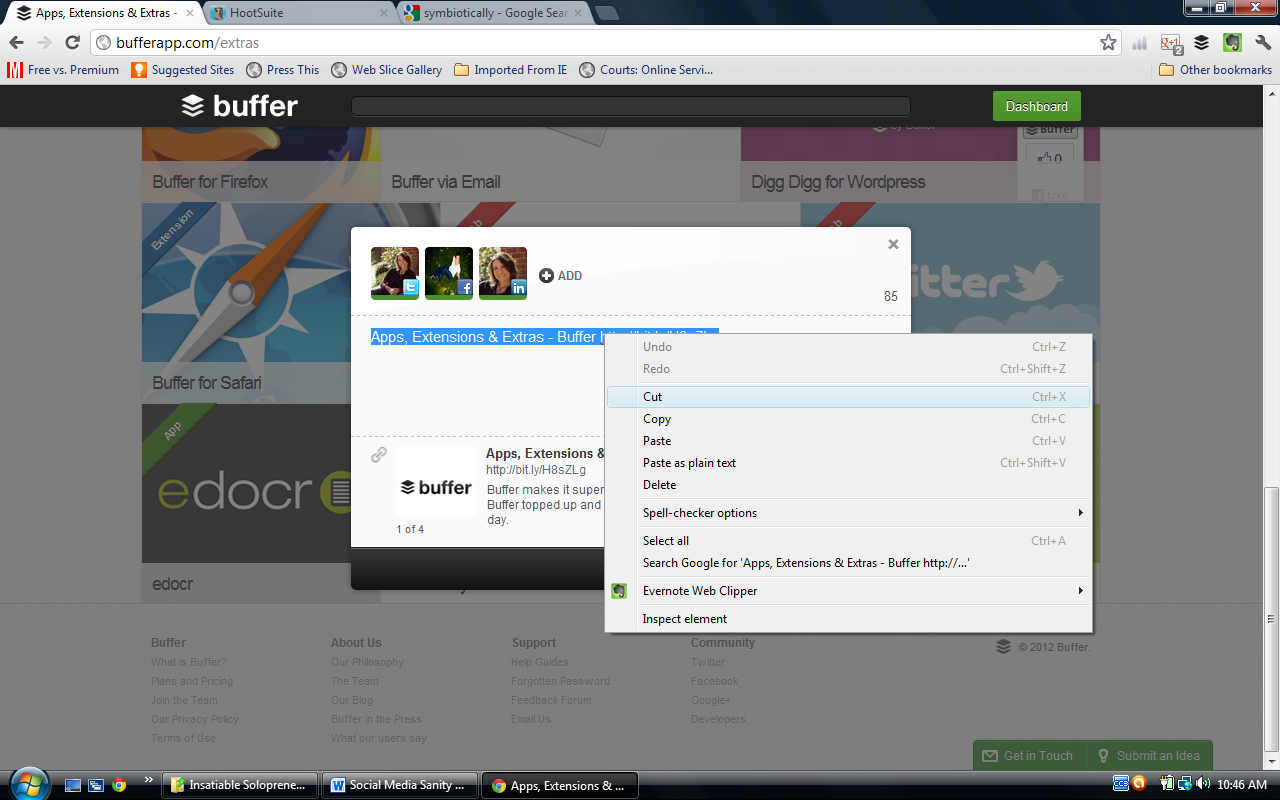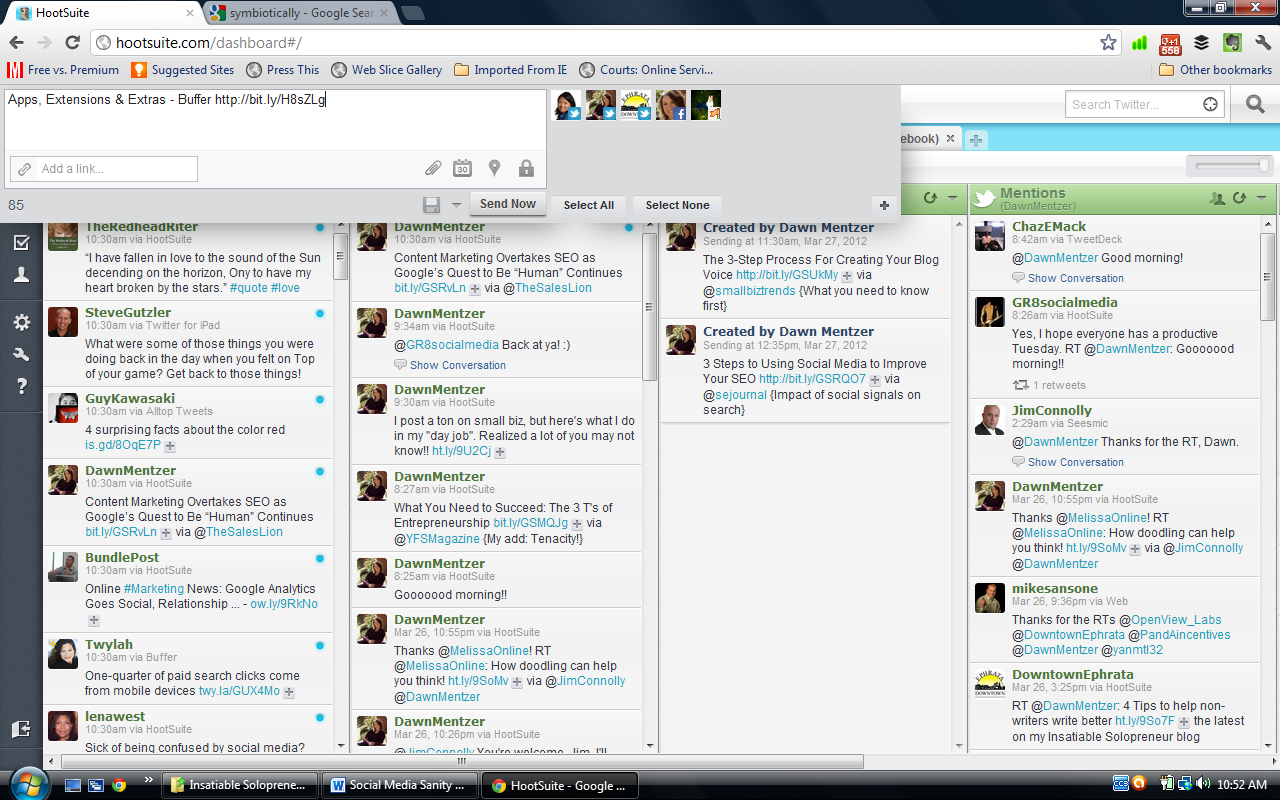How to Use Hootsuite and Buffer Symbiotically to Improve Your Efficiency on Twitter
The time it takes to actively engage on social media reigns as one of the top challenges facing entrepreneurs. Besides my own Facebook Page, Twitter account, LinkedIn presence and Google+ profile, I also manage several others…and, YES, I feel the “time management” pain! Using online tools for scheduling and posting directly from a web page has become an absolute necessity – especially where Twitter is concerned.
Without Hootsuite and Buffer App, I’d be in a padded cell by now. But even with their independent bells & whistles, I was struggling to find efficiency when using them together. And no, I wasn’t willing to give up either one completely!
What’s great about Hootsuite –Hootsuite’s dashboard for monitoring Twitter activity rocks! You can set it up to display: the tweets made by people you follow; when people reply to, retweet or mention you; and direct messages that you receive. Plus, it makes it simple to tweet, retweet (as a mention) and direct message directly from the dashboard – and to schedule all of the above. I also love that Hootsuite is clever enough to automatically fill in the blanks when you start typing a Twitter handle so you don’t need to seek out the exact name via Twitter.com. Sweeeeet!

Hootsuite Dashboard (demonstrating how it suggests Twitter handles as you type them)
What’s great about Buffer App – After adding the Buffer extension to your browser (Chrome, Firefox, or Safari), whenever you want to share a blog post or web page on Twitter (works for Facebook and LinkedIn, too), you need only click the Buffer icon on your browser. Next, a window pops open that automatically creates a shortened URL for the link and some introductory text (which you can modify).

Buffer App for generating posts directly from blogs and web pages
From there, you can opt to share the post immediately or schedule it in your “Buffer”. Your Buffer is the daily schedule you set for your posts. Each time you use the Buffer icon to share a page/schedule a post, the post goes into the next time slot in your Buffer’s line up. Easy!
What wasn’t great about using them both at the same time – Because I was using BufferApp for scheduling posts directly from blogs and web pages, while using the Hootsuite dashboard to schedule retweets of others’ posts, I had two posting schedules to manage and coordinate instead of one. It got tricky, messy, and time-consuming to keep my Buffer and Hootsuite scheduled tweets from overlapping or being spaced too closely together. I found myself constantly resetting my Buffer’s posting schedule and editing the times on individual scheduled posts in Hootsuite to avoid that from happening. Not very efficient!
The fix – This might not be viewed as completely copacetic, but it works for me and I don’t believe it’s creating any issues for either Hootsuite or Buffer App. Symbiosis happened when I began to merge the best of both worlds. In other words, I began to schedule tweets exclusively through Hootsuite, while still using the slick ability to generate posts directly from the web via Buffer App’s browser extension. How you ask? I was scheduling retweets through Hootsuite all along, but then I also started pulling Buffer tweets into that schedule, too. Rather than selecting “Add to Buffer” in the Buffer window when I’m preparing to share a page, I now cut the text and shortened URL from Buffer, paste it into Hootsuite and schedule it there. Maintaining just one posting schedule has saved significant time and effort.

Step 1: Cut content from Buffer window

Step 2: Paste Buffer window content into Hootsuite for scheduling
Alleviating link tracking worries – If you’re concerned about monitoring the click activity on the links in your posts, don’t be. URLs generated through Hootsuite can be tracked through Hootsuite’s analytics. As for the links generated through Buffer that are cut and pasted into Hootsuite, you can access results through your bit.ly account if you’ve chosen bit.ly as your link shortening convention.
Making tools work for you – Although there are marvelous cost-effective and free social media tools out there, it will sometimes take a little creativity (or MacGyver tricks!) to meld their strengths together and develop processes around them to make them work for you. Experiment, experiment, experiment with the resources at your disposal until you find a combination that will save you valuable time and effort!
Your turn! What tricks and tips can you share for using multiple social media management tools more efficiently?






Thanks for this post–I’ve been looking for a way to use both cohesively and this does seem like the only way. I just wish that I could still log in to my Buffer account and see the analytics on tweets sent. For some reason, I’ve never really gotten much from the Hootsuite analytics. Perhaps I’m just not looking into them enough. Any suggestions for that?
Thanks for your comment, Ann Marie! I feel your pain re: the analytics. If you use bitly as your URL shortener, you can still access performance measures there, but it sure would be nice if Buffer or Hootsuite would capture them all in one place. Sigh, one day!
Did you try emailing the tweet (which u wanna RT) from Hootsuite to your buffer app’s email id? That way you can still keep all your retweets managed from within Buffer itself.
I hadn’t tried that, but it sure sounds like could be a good work around. Can you share where I’d find the Buffer App Email ID? Thanks! It’s great to learn of new ways to make the apps work together more efficiently and effectively!